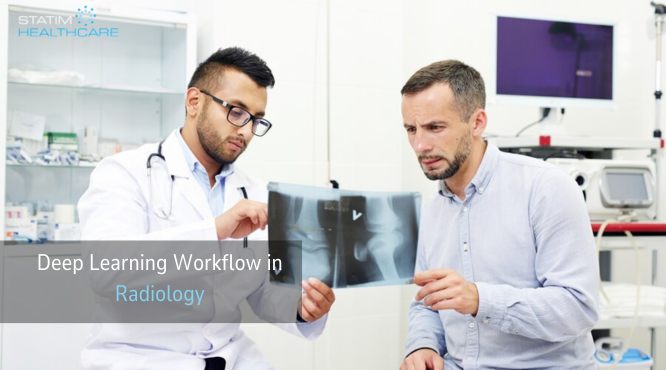In recent years, the field of diagnostic radiology has witnessed a significant transformation with the advent of deep learning technology. Deep learning architectures, which are essentially multi-layered neural networks, have emerged as the most widely used category of machine learning techniques within the past ten years. For several computer vision tasks, such as lesion identification, segmentation, classification, monitoring, and treatment response prediction, deep learning has made it possible to achieve state-of-the-art performance. This is because radiologists have access to high-performance graphics processing units and can work with larger datasets.
Given the amount of clinical use cases that have already been reported in the radiology literature and the open availability of deep neural network designs, we anticipate that deep learning will be a prominent topic in machine learning publications in the near future. For radiologists who wish to start a deep learning project “from scratch” using institutional data, the path ahead could be challenging and unclear.
Deep learning algorithms have revolutionized the way radiologists analyze medical images, leading to more accurate diagnoses and improved patient outcomes.
Understanding the Role of Deep Learning in Radiology
Deep learning, a subset of artificial intelligence (AI), involves the use of neural networks to analyze complex patterns and relationships within medical images. In radiology, deep learning algorithms can assist radiologists in tasks such as image segmentation, feature extraction, and disease classification. By leveraging vast amounts of data, deep learning models can learn to identify abnormalities and assist radiologists in making faster and more accurate diagnoses.
Key Components of Deep Learning Workflow in Radiology
- Data Acquisition: The first step in implementing a deep learning workflow in radiology is to gather high-quality medical imaging data. This may include X-rays, CT scans, MRI scans, and other imaging modalities. Collaborating with top American radiological services can provide access to diverse datasets necessary for training deep learning models.
- Data Preprocessing: Once the data is collected, it needs to be preprocessed to ensure consistency and quality. This involves tasks such as noise reduction, image normalization, and image registration. Radiology services specialists play a crucial role in preprocessing medical images to prepare them for deep learning analysis.
- Model Training: The next step is to train deep learning models using the preprocessed data. This involves feeding the images into neural networks and adjusting the model parameters to optimize performance. Transfer learning, a technique that involves fine-tuning pre-trained models, can expedite the training process and improve model accuracy.
- Model Evaluation: After training the models, it is essential to evaluate their performance using validation datasets. Radiologists and imaging specialists can assess the models’ sensitivity, specificity, and overall accuracy in detecting abnormalities and diagnosing diseases. Continuous evaluation and feedback are crucial for refining and improving the deep learning models.
- Deployment and Integration: Once the models are validated, they can be deployed into clinical practice to assist radiologists in their daily workflow. Integration with existing radiology and imaging services in USA is essential to ensure seamless adoption and interoperability with existing healthcare systems. Radiology departments may also collaborate with technology vendors to develop custom solutions tailored to their specific needs.
The integration of deep learning technology in radiology holds immense potential to revolutionize medical imaging and improve patient care. By leveraging diagnostic radiology expertise and collaborating with top American radiological services, healthcare professionals can embark on their journey towards implementing deep learning workflows in radiology. With careful planning, training, and integration, deep learning models can augment radiologists’ capabilities and enhance diagnostic accuracy, ultimately leading to better patient outcomes in the field of radiology and imaging services in the USA.
Empowering Radiology with Advanced Reporting Solutions
In our exploration of the deep learning workflow in radiology and how to get started, we cannot overlook the crucial role of advanced radiology reporting services like Statim Healthcare. As we delve into the realm of deep learning algorithms and their application in medical imaging, it becomes evident that the accuracy and efficiency of radiology reporting play a pivotal role in the diagnostic process.
At Statim Healthcare, we specialize in providing advanced radiology reporting solutions that leverage cutting-edge technology to deliver timely and accurate interpretations of medical imaging studies. Our team of experienced radiology services specialists and data scientists collaborate to develop and implement innovative algorithms that enhance the diagnostic capabilities of healthcare providers.
With our state-of-the-art reporting platform, healthcare professionals can access detailed and comprehensive radiology reports that facilitate informed clinical decision-making. By harnessing the power of deep learning algorithms, we optimize the interpretation of complex medical images, enabling radiologists to identify abnormalities and diagnose diseases with greater precision and confidence.

